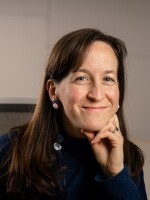May was National Bike Month, and Fresno celebrated with group rides, bike clinics and a city-wide bike to work day. But in two high-profile incidents earlier this spring, one cyclist was killed and another seriously injured while riding in central Fresno. So is bicycling safe here?
Dennis Ball is wearing a Spandex shirt, padded shorts, and clip-in shoes, and he’s looking at me through a tiny mirror on his helmet. He’s president of the Fresno Cycling Club, and he’s taking me on a bike tour of north Fresno. This neighborhood around Palm and Nees is one of the safest parts of the city for cyclists—usually.

“We're going south on Palm; there's a bike lane here, there's parking on the side of the road,” Ball says while pedaling. “And yet, a year or so ago, somebody got killed down here—a bicyclist.”
Fresno is a city that’s at once friendly and perilous for bicyclists. On the one hand, Ball describes it as a "biking mecca" for those looking to joyride in the Sierra foothills. And in the last 15 years, the city has hugely expanded its infrastructure. It’s brought on a bike advisory committee, it’s implemented a bicycle master plan, and it’s drawing up a new one. In just five years, bike lanes and trails have grown by over a third. Now, for every square mile of the city, there’s almost four miles of bike lanes or trails. That’s actually higher than in the model bike-friendly cities of Portland, Seattle, and New York.
But does that mean Fresno is safe for cyclists? There’s no simple answer. Ball says, sure, we’ve got a lot of bike lanes. But they’re mostly in north Fresno, and even then, they’re not always connected. In fact, he and I can hardly ride a mile without breaking a law or endangering ourselves in some way.
“Our bike lane ends, but we have to negotiate over to the other bike lane to continue,” he says as we merge into a turning lane near an intersection.
In an average year, around 130 collisions with bicycles are reported to Fresno police, and between two and three cyclists die as a result. That fatality rate may not sound high, but it is when you consider how small Fresno’s cycling community is compared to other cities. In fact, according to the Alliance for Biking and Walking, Fresno’s bicyclist fatality rate is one of the highest among the country’s 50 most populous cities.
So why is this happening? To answer that, the first question to ask is: where is it happening? Bike collisions are concentrated in central and downtown Fresno—some of the oldest parts of the city.

“Forty, 40, 50 years ago, we weren't really thinking bikes; we were thinking cars,” says Jill Gormley, a traffic engineer with the city of Fresno. “So if you're in some of the older parts of the city you may not see as many bike lanes, for example, on the city streets, compared to a newer development that may’ve happened in the last 5, 10 years.”
Gormley says there simply isn’t space to paint bike lanes on many of the roads downtown. And widening roads can simply be too expensive.
“It's just competing priorities,” she says. “Through the years, there's been lots of cuts in the budgets for things like general road maintenance. That's just kind of how it fell.”
The city is currently updating its active transportation plan, which includes objectives for improving the city for bicyclists, pedestrians and anyone else not in a car. Advocates say they hope safety downtown will be a priority.
But collisions happen in other parts of the city, too. Ken McLeod is a policy manager with the League of American Bicyclists, an organization that awards bike-friendly status to communities across the country. He says Fresno stands out from other applicant communities because of its speed limit; more than 20% of roads here in Fresno are designated 35 miles per hour or higher.
“That's higher than a lot of applicant communities,” he says, “and when you have higher speed streets, typically there's a higher risk. If there's a crash, it's more likely to be more severe.”
The League of American Bicyclists did name Fresno a bike-friendly community. The city’s rated bronze, the lowest of 5 levels. If Fresno wants to renew its rating, or graduate to the silver level, McLeod says he expects to see improvements—like more ambitious bike goals, and more protection for bike lanes.

But infrastructure only goes so far. For William Dominic, the bottom line is improving the relationship between cyclists and drivers—which starts with educating them about the roads.
“You can paint all the white strips on the road that you want to,” he says, “but if people don't respect that or understand it or use it correctly, it doesn't help.”
Dominic is a surgeon, and the director of the burn center at Community Regional Medical Center. He was badly injured while riding his bike one night in February. It was a hit-and-run. He was in the hospital for weeks, including one week in the intensive care unit.
This wasn’t his first incident with a driver, though it was his worst. He’s been doored, cut off by turning cars, and bike-jacked. But Dominic knows aggressive and distracted drivers are the minority. And besides, cyclists need to share the road respectfully, too.
“Every time somebody blows through a stop sign, there's a car there, they’re going to see that and say, ‘look at that idiot.’ And you see that enough, it's obviously going to color your picture of cyclists in general,” says Dominic. “So I think that cyclists can do a better job of presenting themselves as responsible users of the road.”
Maybe then, the bicyclist fatality rate will be a statistic in which Fresno doesn’t stand out.





